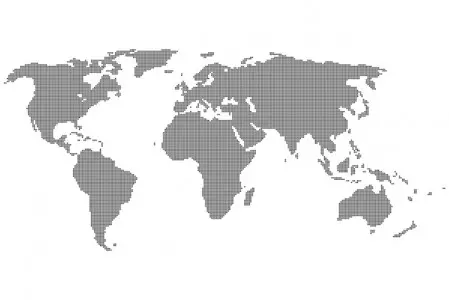Share on Social Media:
The Top 5 Regions in the World with the Most Cancer
| World Region | Male Cancers | Female Cancers | Total Cancers | |
|---|---|---|---|---|
| 1 | Eastern Asia | 2,135,271 cases | 1,585,387 cases | 3,720,658 cases |
| 2 | North America | 831,767 cases | 772,103 cases | 1,603,870 cases |
| 3 | Western Europe | 569,597 cases | 464,713 cases | 1,034,310 cases |
| 4 | Eastern Europe | 494,595 cases | 490,561 cases | 985,156 cases |
| 5 | South-Eastern Asia | 336,746 cases | 388,831 cases | 725,577 cases |
 Special Report
Special Report
- Factors that contribute to regional differences in the types or burden of cancer include regional variations in the prevalence of major risk factors, availability and use of medical practices such as cancer screening, availability and quality of treatment, completeness of reporting, and age structure. Currently, two of the three leading cancers in men (stomach and liver) and women (cervix and stomach) in developing countries are related to infection. Stomach cancer continues to be the most common infection-related cancer worldwide, followed closely by liver and cervix cancer. Approximately 15% of all incident cancers worldwide are attributable to infections. This percentage is about three times higher in developing countries (26%) than in developed countries (8%). (a.)
- In economically developed countries, the three most commonly diagnosed cancers are prostate, lung and bronchus, and colorectal among men and breast, colorectal, and lung and bronchus among women. In economically developing countries, the three most commonly diagnosed cancers are lung and bronchus, stomach, and liver in men, and breast, cervix uteri, and stomach in women. In both economically developed and developing countries, the three most common cancer sites are also the three leading causes of cancer death. (a.)
- One in eight deaths worldwide is due to cancer. Worldwide, cancer causes more deaths than AIDS, tuberculosis, and malaria combined. Cancer is the second leading cause of death in economically developed countries (following heart diseases) and the third leading cause of death in developing countries (following heart diseases and diarrhoeal diseases). The burden of cancer is increasing in developing countries as childhood mortality and deaths from infectious diseases decline and more people live to older ages. Further, as people in developing countries adopt western lifestyle behaviours, such as cigarette smoking, higher consumption of saturated fat and calorie-dense foods, and reduced physical activity, rates of cancers common in western countries will rise if preventive measures are not widely applied. (a.)
- A higher proportion of the cancer burden occurs in less developed regions of the world, both in terms of cancer incidence (56% of new cancer cases in 2008 occur within developing regions) and cancer mortality (63% of cancer deaths). The most commonly diagnosed cancers worldwide are lung (1.61 million, 12.7% of the total), breast (1.38 million, 10.9%) and colorectal cancers (1.23 million, 9.7%). The most common causes of cancer death are lung (1.38 million, 18.2% of the total), stomach (0.74 million, 9.7%) and liver cancers (0.69 million, 9.2%). (b.)
- Several major cancers linked to chronic infectious conditions (including stomach and cervix) become less common as countries become economically developed, whereas cancers related to tobacco use and Western patterns of diet, physical inactivity, and reproduction (especially lung and bronchus, breast, and colorectal) increase with economic development. (a.)
- The American Cancer Society. (2007). "Global Cancer Facts & Figures 2007" (pages 1-4). Retrieved December 9th, 2010.
- International Agency for Research on Cancer. (2010). Press release: "IARC launches the definitive cancer statistics resource GLOBOCAN 2008". Retrieved Dec, 2010.
Tags:
Health Statistics, Top 5 Most, Cancer statistics
Sources: GLOBOCAN International Agency for Research on cancer 2008 (last accessed by top 5 of Anything: Dec, 2010).
List Notes: Data is estimated Number of new cancer cases by world area for the year 2008. Excludes non-melanoma skin cancer.
Sources: GLOBOCAN International Agency for Research on cancer 2008 (last accessed by top 5 of Anything: Dec, 2010).
List Notes: Data is estimated Number of new cancer cases by world area for the year 2008. Excludes non-melanoma skin cancer.

